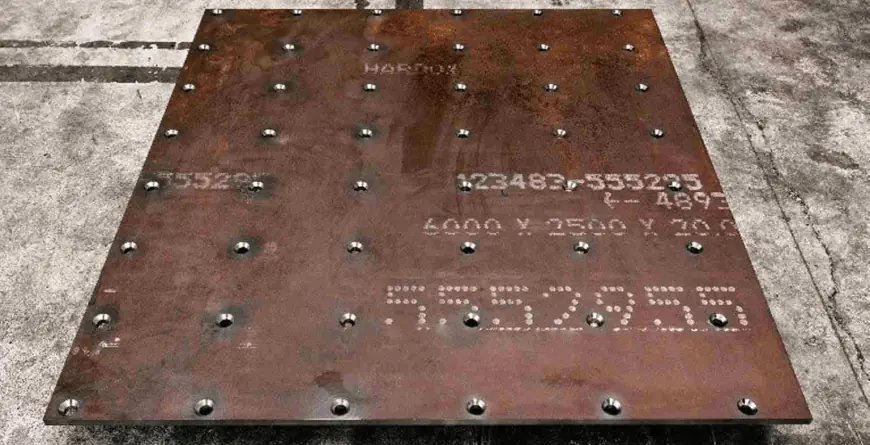The Role of Linear Plates in Structural and Mechanical Design
Learn how linear plates contribute to structural and mechanical design by providing stability, load distribution, and strength in a wide range of applications. Discover their essential role in modern engineering.

In the world of engineering and design, linear plates play a crucial role in both structural and mechanical applications. These flat, rectangular metal components are used extensively in a variety of industries due to their strength, versatility, and ease of manufacturing. Whether in the construction of buildings, bridges, machinery, or automotive parts, linear plates are essential for providing stability, support, and functionality. In this blog, we’ll explore the various roles linear plates play in structural and mechanical design and the benefits they bring to the table.
What Are Linear Plates?
Linear plates are flat and smooth metal parts and are usually made from stainless steel, carbon steel or aluminium. These plates can be found in various dimensions, thicknesses, and surface finishes that make them versatile for various uses. In mechanical and structural design, the main purpose of linear plates is to transmit loads and support and serve as the basis for other components.
Their rectangular shape makes them suitable for use in a variety of configurations, where they may act as surfaces, supports, or barriers. Linear plates can be precisely cut and shaped to meet specific project requirements, ensuring optimal functionality and structural integrity.
The Importance of Linear Plates in Structural Design
-
Load Distribution
In structural design, linear plates serve as essential components in distributing loads and stresses across various parts of a structure. These plates are often used in the construction of foundations, floors, roofs, and walls, where they bear weight and help evenly distribute pressure. Whether in buildings, bridges, or other infrastructure, linear plates ensure that stress is managed effectively, preventing damage or failure of the structure.
By using linear plates, engineers can design structures that are more resilient to external forces, such as wind, seismic activity, and the weight of the building or its contents. The versatility of linear plates allows them to be used in a variety of ways to optimize load-bearing capacities and overall safety.
-
Stability and Reinforcement
Besides load distribution, linear plates are crucial for giving support and strength to a structure. For instance, in the construction of bridges, linear plates are used in the reinforcement of the bridge deck so as to give it the required strength to bear the traffic of heavy vehicles and pedestrians. Likewise in skyscrapers and other large buildings, linear plates serve as reinforcement materials in the walls floors and ceilings to enhance the building’s stability.
By reinforcing key structural components, linear plates help prevent structural failures and increase the lifespan of the construction. This is particularly important in areas where environmental factors, such as earthquakes or extreme weather conditions, can place additional strain on the structure.
-
Customization and Versatility
One of the key advantages of linear plates in structural design is their ability to be customized to meet specific needs. They can be manufactured in different shapes, sizes, and thicknesses, making them ideal for a variety of structural applications. Customizing the plates allows engineers to ensure that the material fits the exact requirements of the project, whether it’s the weight-bearing capacity, durability, or aesthetic preferences.
For instance, in the construction of an industrial building, linear plates may be used as flooring, partition walls, or support beams, depending on the structural design and the function they need to serve. This adaptability makes linear plates an indispensable tool in modern construction.
The Role of Linear Plates in Mechanical Design
-
Precision and Accuracy
In mechanical design, linear plates are employed as base parts of a machine, where they offer a flat surface upon which other parts can be mounted. These plates are very sensitive for their dimensions and alignments because any slight differences in these parameters can lead to functional problems in the final product. For instance, linear plates are widely applied in the production of conveyors, as the flat shape of the plates allows for the required stability of the movement of the goods. These plates also serve as foundation pieces for other mechanical components, such as gears, motors, and pistons, ensuring that all parts are correctly aligned and operate efficiently.
-
Durability and Strength
In mechanical applications, the properties of materials that are valued most are durability and strength. Linear plates made from high-strength materials like stainless steel or aluminium are able to withstand significant mechanical stress without deforming or breaking. This makes them ideal for use in machinery and equipment that require consistent performance under heavy loads, such as in the automotive and aerospace industries.
By using linear plates, engineers can ensure that mechanical systems are built to last, reducing the need for frequent repairs and maintenance. The strength of these plates also makes them suitable for use in high-performance applications, where durability is a top priority.
-
Heat Resistance and Corrosion Prevention
In many mechanical systems, linear plates are exposed to extreme temperatures and harsh environments. For instance, in the manufacturing of heat exchangers, linear plates are used to provide a sturdy foundation while withstanding high temperatures. Stainless steel and other corrosion-resistant materials are commonly chosen for these applications because they offer excellent protection against rust, corrosion, and wear.
The ability of linear plates to resist heat and corrosion makes them an essential component in industries such as chemical processing, power generation, and food processing, where exposure to harsh chemicals or high temperatures is common. This resistance to environmental factors ensures the longevity and reliability of the mechanical systems they are part of.
Conclusion
Linear plates are a fundamental part of both structural and mechanical design, offering a wide range of benefits such as load distribution, reinforcement, durability, and customization. Whether used in the construction of buildings, bridges, or machinery, these versatile components provide essential support and stability, ensuring that structures and systems perform reliably over time.
The importance of linear plates cannot be overstated, as they form the backbone of many modern engineering projects. From the strength they provide in supporting large structures to their precision in mechanical applications, linear plates are indispensable in the world of engineering and design. With continued advancements in materials and manufacturing techniques, the role of linear plates in structural and mechanical design will only continue to grow.
What's Your Reaction?
 Like
0
Like
0
 Dislike
0
Dislike
0
 Love
0
Love
0
 Funny
0
Funny
0
 Angry
0
Angry
0
 Sad
0
Sad
0
 Wow
0
Wow
0


















































